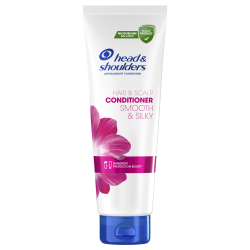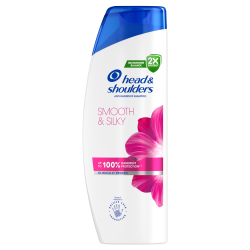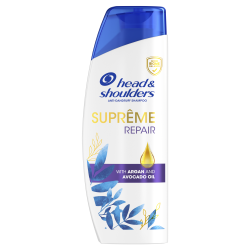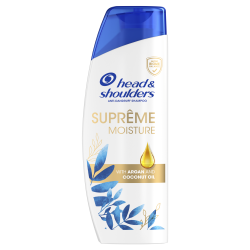Heat damage: can heat cause dandruff?
- In this article:
- Go to sectionENVIRONMENTAL HEAT
- Go to sectionHEAT STYLING
- Go to sectionHEAT DAMAGE AND DANDRUFF – WHAT’S THE LINK?
- Go to sectionHEAT AND DANDRUFF
- Go to sectionHOW TO GET RID OF DANDRUFF
- Go to sectionHOW DOES HEAT DAMAGE HAIR?
- Go to sectionHOW HEAT DAMAGES YOUR SCALP
- Go to sectionHOW TO AVOID HEAT DAMAGE
- Go to sectionHOW TO TREAT HEAT DAMAGED HAIR
Extreme heat damage can rob your hair and scalp of moisture, and can lead to scalp redness.
Believe it or not, your hair is highly sensitive to changes in the environment, like big fluctuations in humidity or extreme temperature. Heat damage can leave your hair looking dry and dull.
There are two different types of heat that can cause damage to your scalp or hair – environmental and heat styling.
ENVIRONMENTAL HEAT
We all know that the hot summer sun can cause sunburnt skin – especially on the surfaces facing it, like your unprotected scalp or shoulders.
Hotter temperatures raise the temperature of the scalp and cause you to sweat, creating the ideal environment for the dandruff-causing microbe, Malassezia globosa, to flourish.
HEAT STYLING
Heat styling is a major culprit of dry and damaged hair. Using hair dryers on a high heat setting can dry out the scalp while the direct heat on wet hair can actually boil the water molecules inside the hair strands.
This causes a phenomenon known as “bubble hair”, which is visible under a microscope.
The bubble that forms permanently deforms the hair, making it much more fragile and more likely to break off in the future.
HEAT DAMAGE AND DANDRUFF – WHAT’S THE LINK?
Can heat cause dandruff? Well, it’s complicated.
There are definitely those of us who’ve had dandruff flare ups after heat treating hair. But is heat the cause?
The short answer is no. While heat damages both your hair and scalp, it is only a contributing factor in causing dandruff to flare-up.
HEAT AND DANDRUFF
Dandruff is caused by a naturally-occurring microbe called Malassezia globosa, which feeds on your scalp oils.
It’s present on everybody’s scalp but about half the world’s population is sensitive to it.
That can cause problems, including:
red itchy skin
dry flakes
If you then add heat to the mix, things can get worse.
If your scalp is already damaged by dandruff, heat will likely make that worse, drying it out even more.
HOW TO GET RID OF DANDRUFF
The first thing to do is lay off the heat treatment for a bit – your hair and scalp needs the opportunity to recover.
Then get yourself a good dandruff shampoo, like our Dry Scalp Care shampoo. Formulated with pyrithione zinc, Head & Shoulders not only fights the symptoms of dandruff, it will help restore moisture to your scalp too.**
That gives your body time to repair the damage to your scalp while the symptoms of dandruff are under control.
HOW DOES HEAT DAMAGE HAIR?
Heat in general makes your hair stretchier, but also more likely to break. Hair that’s being blow-dried can break with just half the force needed to break hair at room temperature (most blow driers have a max temperature of 140 degrees Fahrenheit to prevent skin burns).
Another problem with blow drying is mostly in the way it’s done. Your hair strands are covered in a protective layer known as cuticles, like shingles protecting a roof. When warm, damp hair is combed during blow-drying, it stretches.
Unfortunately, the stretching can cause the cuticle edges to lift up and crack. Even if the fibre stretches back, the cuticle can stay lifted, making your hair feel rough and damaged.
Finally, if very damp hair is overheated, the heat can even boil the water within the hair and cause permanent damage often known as ‘bubble hair’, because of the shape of the blisters that form.
The blisters are extremely fragile; the hair is likely to break in that spot in the future.
HOW HEAT DAMAGES YOUR SCALP
Your scalp needs moisture to be healthy. You can protect your scalp’s natural moisture balance by regularly washing with a deep moisturizing shampoo for scalp and hair.
Unfortunately, heat damage from blow drying or straightening hair can quickly undo that good work.
When you apply heat to your hair and scalp, the water in your skin starts to evaporate. Excess heat means essential moisture found there can be lost, making your skin dry out.
The dry skin is damaged, and "leakier" – allowing even more water to escape out, and more factors that cause discomfort to get in.
The more you use heat styling tools, the more your scalp dries out, eventually beginning to flake and itch.
If you’re already susceptible to dandruff, this is bad news.
HOW TO AVOID HEAT DAMAGE
There are a couple of ways you can minimize the heat damage caused by blow drying:
Use a heat protectant spray or leave-in conditioner
Use your dryer on a lower heat setting – ideally, the flow of air should feel comfortable on your hand
Keep your hairdryer moving. By avoiding focussing on one spot for too long, you’ll be able to minimise the amount of heat that is concentrated on any one part of your hair at once.
HOW TO TREAT HEAT DAMAGED HAIR
To combat dryness, you can treat your hair and scalp with a moisturizing anti-dandruff shampoo. Our Supreme Moisture Shampoo is a great option that moisturizes and conditions your hair and scalp.
The special formula works to help relieve your dry scalp and restore smoothness to your damaged hair, leaving it silky and hydrated.
The shampoo has been proven to reduce breakage**, ensuring your hair is strong and 100% dandruff-free.***
The upgrade takes its inspiration from leading skin care products and cares for your scalp in 3 steps:
Cleans – with gentle cleansing agents that wash away dandruff flakes, grease and oil to leave your hair noticeably cleaner
Protects – the new formula contains micro-minerals which are left behind after you wash your hair to protect against dandruff damage so your hair can grow from a healthier foundation
Moisturizes – it instantly delivers extra conditioning to leave your hair feeling soft and smooth while the micro-minerals help to repair the scalp and lock in more moisture
Get more hair care tips and advice from the experts on washing and styling your hair.
More about the causes of dandruff
* by fighting dandruff
** vs. non-conditioning shampoo
*** visible flakes with regular use











